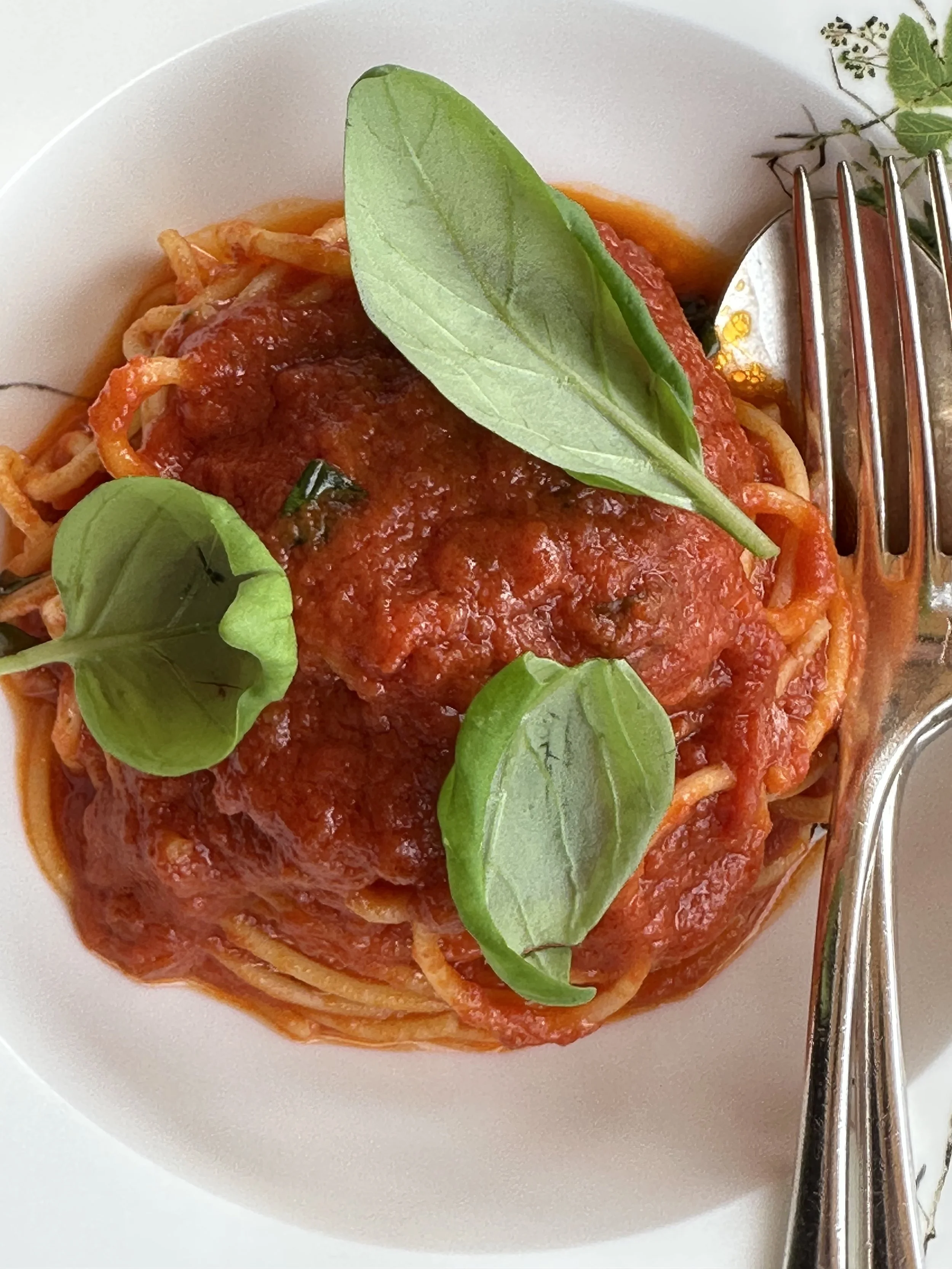Spaghetti al Pomodoro
There's something magical about the simplicity of a perfect pasta al pomodoro. This iconic Italian dish captures the essence of Mediterranean cooking—where a few high-quality ingredients combine to create something far greater than the sum of their parts.
The magic lies in the marriage of sweet San Marzano tomatoes, fragrant basil, and perfectly al dente spaghetti, all brought together with a generous drizzle of extra virgin olive oil. While every Italian region fiercely defends its local specialties, pasta al pomodoro transcends regional boundaries, though its roots trace back to Naples—the birthplace of both dried pasta and those famous San Marzano tomatoes.
This recipe holds a special place in my kitchen as one of those timeless comfort dishes that never fails to satisfy. It's proof that sometimes the simplest dishes are the most memorable.
Nutritional Powerhouse
This classic Italian dish isn't just delicious—it's packed with beneficial nutrients. The tomatoes provide lycopene, a powerful antioxidant that becomes more bioavailable when cooked with olive oil. The extra-virgin olive oil contributes heart-healthy monounsaturated fats and polyphenols, while fresh basil adds not just flavor but also anti-inflammatory properties and essential vitamins. When paired with whole grain pasta, you'll get a good dose of fiber and B vitamins. For a protein boost, the traditional finishing touch of Parmigiano-Reggiano adds not only umami depth but also calcium and complete protein.
To make this dish even more nutritious, consider these tips:
Opt for whole grain pasta to increase fiber content
Add extra fresh basil at the end for maximum nutritional benefits
Use high-quality extra-virgin olive oil, which contains more beneficial compounds
Ingredients
- 6 tablespoons extra-virgin olive oil
- 1 clove garlic, lightly crushed
- One 28-ounce (793 g) can whole peeled tomatoes
- Fine sea salt
- 1 branch fresh basil, plus 5 fresh basil leaves; or 10 fresh basil leaves
1 pound (500 g) spaghetti or other pasta (preferably ancient grain or whole grain)
- Freshly grated Parmigiano Reggiano cheese, for serving
Method
Begin by warming 4 tablespoons of the olive oil in a large saucepan over medium-low heat. Add the garlic and let it gently sizzle for about 2 minutes to infuse the oil. Gently press the garlic to release more flavor, being careful not to let it brown. Add the red pepper flakes if using. At this point, you can either remove the garlic or leave it in, depending on your preference.
Carefully add the tomatoes and their juices (they may sputter a bit in the hot oil). Break them up using a potato masher or the back of a wooden spoon. Season with 1/2 teaspoon salt and increase heat to medium-high until bubbling. Reduce to a gentle simmer over medium-low heat, partially cover, and cook for 35-40 minutes. Stir occasionally until the sauce darkens and thickens, with oil gathering on the surface. If it becomes too thick, simply add a splash of water. Once done, turn off the heat and let rest for 10 minutes.
For a silky-smooth sauce (optional but recommended), pass the mixture through a food mill with the finest disk, or press through a fine-mesh strainer into a bowl. Return to the pan and taste for salt, adjusting if needed. Stir in the remaining 2 tablespoons olive oil. Add either a branch of basil or scatter in about 5 leaves, then simmer over medium heat for 15 minutes to infuse the basil flavor. Remove from heat, discard the basil branch (and garlic if you haven't already), and tear in a few fresh basil leaves if desired. Cover to keep warm.
Meanwhile, bring a large pot of water to a vigorous boil. Salt generously and add the pasta, cooking until just al dente according to package instructions. Using tongs or a pasta fork, transfer the pasta directly to the sauce, bringing along a bit of the starchy cooking water. Over low heat, toss the pasta with the sauce for about 2 minutes until the noodles are perfectly cooked and well-coated.
Serve immediately in warmed bowls, spooning any remaining sauce over the top. Finish with a generous shower of freshly grated Parmigiano Reggiano.

